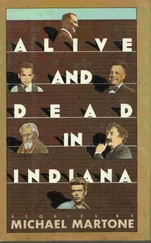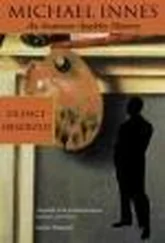Michael Martone - Four for a Quarter - Fictions
Здесь есть возможность читать онлайн «Michael Martone - Four for a Quarter - Fictions» весь текст электронной книги совершенно бесплатно (целиком полную версию без сокращений). В некоторых случаях можно слушать аудио, скачать через торрент в формате fb2 и присутствует краткое содержание. Год выпуска: 2011, Издательство: Fiction Collective 2, Жанр: Современная проза, на английском языке. Описание произведения, (предисловие) а так же отзывы посетителей доступны на портале библиотеки ЛибКат.
- Название:Four for a Quarter: Fictions
- Автор:
- Издательство:Fiction Collective 2
- Жанр:
- Год:2011
- ISBN:нет данных
- Рейтинг книги:3 / 5. Голосов: 1
-
Избранное:Добавить в избранное
- Отзывы:
-
Ваша оценка:
- 60
- 1
- 2
- 3
- 4
- 5
Four for a Quarter: Fictions: краткое содержание, описание и аннотация
Предлагаем к чтению аннотацию, описание, краткое содержание или предисловие (зависит от того, что написал сам автор книги «Four for a Quarter: Fictions»). Если вы не нашли необходимую информацию о книге — напишите в комментариях, мы постараемся отыскать её.
. In subject — four fifth Beatles, four tie knots, four retellings of the first Xerox, even the sex lives of the Fantastic Four — and in structure — the book is separated into four sections, with each section further divided into four chapterettes—
returns again and again to its originating number, making chaos comprehensible and mystery out of the most ordinary.
Four for a Quarter: Fictions — читать онлайн бесплатно полную книгу (весь текст) целиком
Ниже представлен текст книги, разбитый по страницам. Система сохранения места последней прочитанной страницы, позволяет с удобством читать онлайн бесплатно книгу «Four for a Quarter: Fictions», без необходимости каждый раз заново искать на чём Вы остановились. Поставьте закладку, и сможете в любой момент перейти на страницу, на которой закончили чтение.
Интервал:
Закладка:
MOCKINGBIRD
Their answering machines matched, and they started leaving messages for each other. Beige plastic boxes with a keyboard of buttons — play, fast-forward, erase, rewind. The tape spooled in a transparent cassette stored in a compartment inside. You could see the sprockets turning in the cassette as you listened to it play through a clear plastic window in the lid. Nested in the buttons, a red LED lit up a number indicting the number of calls. Depressing play released the message into the room through the low fidelity speaker wired in such a way as to make everything sound melancholy. They tried to keep each other's tape filled with the magnetic imitations of each other's voice. He would come home to find the machine's number glowing, 21, say, or 25, 22 messages only to find each one of the messages another piece of one long call from her, the machine starting, then cutting her off after a proscribed interval. Each new message contained another message about the message left just before, the procedures she endured to redial and connect, the transitional phrases of “where was I“ and “Oh, yes“ linking all the calls together in the end, a long self-conscious apology for taking up all the tape with the series of calls and indicating that this was a very long and convoluted way to say something she should be able to say simply — that she loved him. She loved him. He was fond of leaving one long message on her machine. Each machine had a setting that allowed for varying the duration of the machine's patience. He expected that he would have to leave a long message, and so he spoke extemporaneously though sometimes from notes and at length about his day, and at every transition point, he linked his mundane and ordinary activities with the phrase, “and I thought of you when…“ or “that made me think of you…“ or “I told myself to remember to tell her.“ And then he would tell her, tell her the structure of his thinking as he thought, of his remembering as he remembered it. Both machines, doling out their seconds, initiated and terminated the time with a nasal beep, flattened bleat, the sound of which programmed itself, a concussion, into each of them. They dreamed of the beep, found that in the messages they would sometimes beep themselves, a charm to ward off the inevitable, rapidly approaching real beep. The sounding of it, the anticipatory silence before it, and the sound itself, and the other silent silence after, its punctuation. They started and stopped on the cue. On cue they entered the noisy space of their connection, and on cue they became again disembodied, distant, silent. They liked the old machines for the mechanical magic they conjured; playing the message, each other's voice filled the room, evoked the other in three wraithlike dimensions that made the voices seem almost corporeal, an actual body solidifying around the skeleton of vibrating air. Each could be in each other's next room, calling down the hallway around the corner. As time passed, the messages began to be more complicated, as each of them attempted to pack the other's tape with more and more information. It started when one of them played a song in the background. A news report on the radio followed, a commercial on television picked up inadvertently. The sound from the street below, the dishwasher turning on, washed over the string of words strung on the spooling, the unspooling tape. Soon, it occurred to both of them that they could play back to each other each other's messages to the other. There, on the answering machine, was the new message and underneath it, in the background, the previous recorded message of the now listener's voice leaving a message. The machine recorded the message of the improvised duet of person and the person in the machine speaking in waffled mono that mimicked a stereo track, leaving a message and at the same time responding to a message that had been left. Those layers now recorded were then played when the next call was made. And the next message added another layer of past messages to the mix. More and more silent spaces on the tape filled with words, words turning to syllables turning to diphthongs and ligatures turning finally into a deep layered mist, bits of alphabets, static murmuring, incomprehensible mass, but strangely intimate, ancient, prehistoric, preverbal. The acoustic of amniotic fluid. Warbles, squeaks, smeared thumps. It was a repertoire of sounds they stole from each other and then gave back as baroque, rococo, atonal fugues. All of the noise became a foil to the final track they applied, recording each other's orgasms over and over again, the wall of auditory stimulus building up from a triggering beep, each other's name burbled up as a downbeat, beating, the gulped hiccupping of breath backbeating, all percussion, cussing counter punctually, attempting to fill in every iota of silence with any un-silent utterance, collapsing all the space between them into the compact sonic puck of the solid absence that mocks and mocks and mocks and mocks them both. The sound then turned liquid, sizzled, finally, like rain, like a tidal rush, a sound your own blood makes in your own ear when you hear it, when you hear it when you listen for it.
RED-WINGED BLACKBIRD
His room in the Amway Grand Plaza Hotel overlooks the Grand River at the point at which it is interrupted by an artificial rapid, a concrete stair-step that spans the river, symmetrical tiers tearing up the glassy flow, an organized baffle. Beyond the river, he looks down on the pie-wedge slice of the Gerald Ford Museum, its acute angle, a cursor, arrowing back to him in his cockeyed corner room. He teaches geometry and finite math to 9 thgraders in an Indiana junior high and sells Amway on the side, but soon, he thinks, it will be the other way around. Everyone knows the money is not so much in selling the product — detergents and soaps and perfumes and vitamin supplements — but in selling people on selling the product and then selling them the product they would sell. He likes the geometric progression of the profits, the curving curve of results, the logarithmic rhythm of getting rich quick as his network of distribution compounds and compounds and compounds and compounds. As a numbers person he understands this better than most, loves to diagram, for a prospective distributor, the trellised architecture of the scheme — names within boxes, networks of radiating beams of connecting emanations, doubling down the gridded yellow legal pad. He looks the part. The white poly short-sleeve shirt, the dark waffle knit tie at his throat, the heavy glasses of glossy black plastic with the bitten end of the right temple earpiece. “It's not rocket science,“ he tells the prospective distributor, but his looks suggest it is. He's an analyst from Rand, a grammarian of overflowing flowcharts.
A woman in the lobby of the Amway Grand Plaza Hotel — not one of the conventioneers of Amway distributors checking in nor a member of the native elect Dutch Reform who people the environs of the Grand River Valley of southwestern Michigan, but a buyer of office furniture from Philadelphia, touring the nearby Hermann Miller factory — sees him and thinks without thinking that there's a man who needs to get laid.
Instead of getting laid he, the sober conventioneer, returns to his room to order dinner in, prop himself up in the king-sized bed blanketed with the scalloped sheets of notes from today's sessions sorted into piles, his nest feathered. Along the river outside, he sees the copses of rushes in the eddies, rafts in the backwaters along the banks. Perching blackbirds bow over the cattails. The birds launch themselves, dozens of them, intersecting and crisscrossing, squawking, he imagines, to settle once more, jostling on different roosts. From this distance they are dots, fluid punctuation, floating decimal points. He knows the hotel around him is full, its hundreds of rooms occupied with men and women unmoored, at loose ends, and most are here to make connections, construct a honey-combed armature of enterprise — one big hive, the whole ball of wax. The company anoints itself with the moral disinfectants of god and country, and the scrupulous cleanliness marketed in Grand Rapids comes backed by pious guarantees of godliness. But he knows that that filth, that ugliness is as human as apple pie, that he and the company count on it. Hygiene may be the main business model, after all, but the company includes a line of euphemistically disguised lubricants, pheromonal colognes, and atomized herbal propellants in its catalog, samples of which he now deploys upon his own body as he begins to masturbate, listening as he does so for the sounds of other humans all around him, all the rooms filled with humans, making love — the beat of the headboard, a howl from a hissing shower, the giggle that picks the locked connecting door, the spillage of dead weight onto the ceiling that's also a floor. He comes into the sink, reaches beneath to the fascia board of the vanity for a tissue only to discover the built-in dispenser is empty. He pops off the chrome cover to get to the empty cardboard box behind it. The room is stocked with a replacement along with all the other amenities, all Amway brands, of course. He finds hidden behind the empty box a Polaroid picture, the first of many he will find, of a couple having sex, or at least he thinks it is a couple because the pictures are all cropped down to cunts and cocks, lips and tongues, mouths and nipples, hair and hair. The first stowed behind the box spills out onto the faux marble floor. It takes a moment for him to sort out the abstract angles and lines, the trapezoids and rhombi, and when he does, he stares at the fleshy flesh before him, stares it back to the strange plane of the start — solid slabs of his first impression — so he can experience again the sensation of the optical illusion, fading out and back into focus. Now he senses that these surround him, little treasures that are themselves a kind of treasure map. He finds more and more of them. One behind the notice tucked into the plastic sleeve tacked to the door. Inside the zippered upholstery of the armchair cushion. Beneath the desk blotter. Behind the pictures of the lake dunes. On top of the television wardrobe. Inside the dry cleaner's bag. There are three in the Bible. And each time he finds another he starts to search for more. Within the folder of stationery. Under the automatic coffee pot. There is a growing pile on the bed mixed in with his notes of projections and testimonials. He begins to put animated sequences together — four frames of a cock first disappearing inside a cunt then further in and then completely inside only to emerge, in the fourth picture, glistening, the sheen on the skin like the sheen on the still undeveloped print of an instant photograph, the emulsion beginning its wet work, evaporating into the schematic of solid geometry all pyramids, cones, cylinders, and spheres. Bounded space and its infinite absence. He shuffles the prints once more, deals them again onto the cluttered bed, a four-handed game. It is all chance, permutation, game theory that results. How long it must have taken them, he thinks, to create the fragmentation, so many moments of passion — sets and subsets, intersections of oblong fields of Venn diagrams, x's and y's. Each reading of the cards promises a prediction of some future from the residue of a past. He thinks, then, of Christmas and the last day before dismissal. He has his classes listen to a scratchy record of “The Twelve Days of Christmas“ and poses for them an algebraic puzzle to pass the time. How many presents in total does the true love receive? The one partridge and one pear tree multiply through the course of the round to twelve each. The two turtle doves covey up to twenty-two. There would be thirty French hens, and thirty-six calling birds, etcetera. Etcetera, etcetera, etcetera, through the whole progression of obsessed love. Outside now, the red-winged blackbirds have left their perches along the river, launching from the cattails that then rebound, bristling. The birds levitate into a cloud around a much larger black bird, a crow or a raven in full flight fleeing the dive-bombing, tag-teaming attacks over the overly neat rapid rippling below. Another and another bird peels out of the cloud to intercept the distressed bird attempting to maintain a little altitude. It all takes place in silence, a harried sketch of vectors plotting velocity, gravity, and drag. Even to his trained eye it is impossible to count them all. The red-winged blackbirds can't stop, continue to create this silent racket, persistent pantomime, suspended in the lowering sky.
Читать дальшеИнтервал:
Закладка:
Похожие книги на «Four for a Quarter: Fictions»
Представляем Вашему вниманию похожие книги на «Four for a Quarter: Fictions» списком для выбора. Мы отобрали схожую по названию и смыслу литературу в надежде предоставить читателям больше вариантов отыскать новые, интересные, ещё непрочитанные произведения.
Обсуждение, отзывы о книге «Four for a Quarter: Fictions» и просто собственные мнения читателей. Оставьте ваши комментарии, напишите, что Вы думаете о произведении, его смысле или главных героях. Укажите что конкретно понравилось, а что нет, и почему Вы так считаете.












